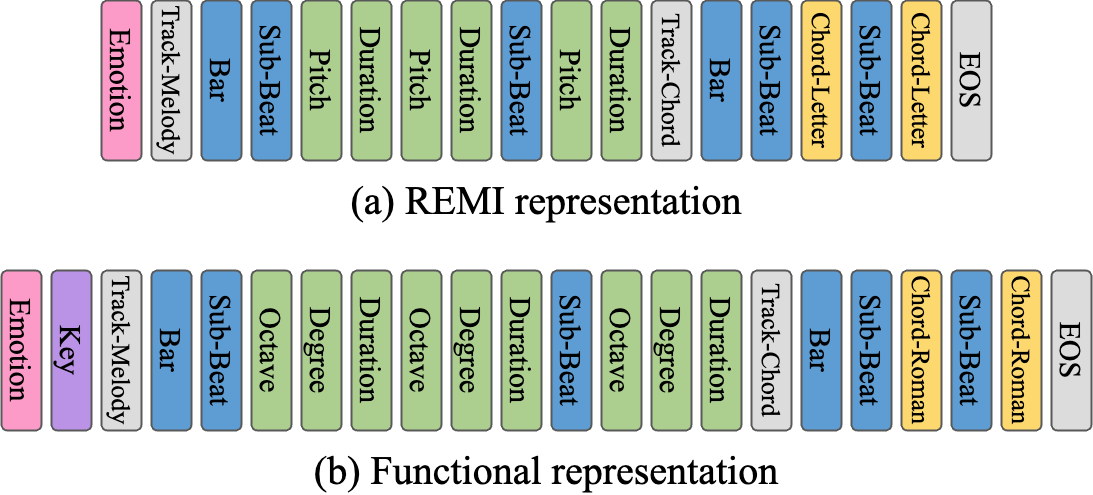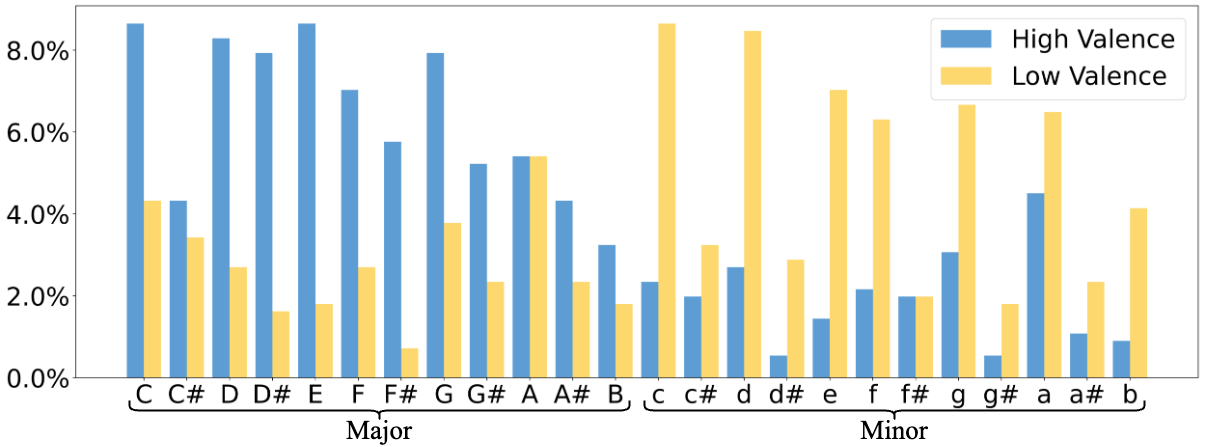Introduction
In this paper, we propose a novel functional representation designed as an alternative to REMI, a popular event representation that uses note pitch values and chord names to encode symbolic music.testttt!!

This new method takes musical keys into account, recognizing their significant role in shaping music’s emotional character through major-minor tonality.

Specifically, our method represents both melody notes and chords with Roman numerals relative to musical keys, a functional format considering the relationships between notes, chords and scales (major or minor).

It also allows for melodic variation with respect to keys and addresses the problem of data scarcity for better emotion modeling.
A Transformer is employed to harmonize key-adaptable melodies, allowing for keys determined in rule-based or model-based manner.
Harmonization Samples
We present a selection of samples within the same context as our user study, i.e., original pieces as well as their four variants generated with the same melody but the opposite emotion condition. Four variants include:
- REMI (trans): transpose to C major / c minor and represent in REMI; simply set the emotion event to the target emotion without changing keys
- REMI (rule): transpose to C major / c minor and represent in REMI; determine keys in rule-based method
- Ours (rule): represent in functional representation; determine keys in rule-based method
- Ours (model): represent in functional representation; determine keys in model-based method
Illustration

| Original (Positive) | Generated (Negative) |
|---|---|
Negative Variants for Positive Original Pieces
| Original | REMI (trans) | REMI (rule) | Ours (rule) | Ours (model) | |
|---|---|---|---|---|---|
| Sample#1 | |||||
| Sample#2 | |||||
| Sample#3 | |||||
| Sample#4 | |||||
| Sample#5 |
Positive Variants for Negative Original Pieces
| Original | REMI (trans) | REMI (rule) | Ours (rule) | Ours (model) | |
|---|---|---|---|---|---|
| Sample#1 | |||||
| Sample#2 | |||||
| Sample#3 | |||||
| Sample#4 | |||||
| Sample#5 |
Authors and Affiliations
-
Jingyue Huang
Research Assistant @ National Taiwan University / Master student @ New York University
jh8522@nyu.edu -
Yi-Hsuan Yang
Professor @ National Taiwan University / Joint-Appointed Researcher @ Academia Sinica
yhyangtw@ntu.edu.tw, affige@gmail.com
website